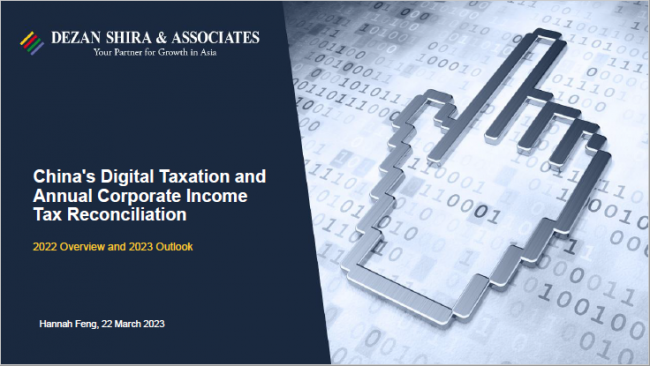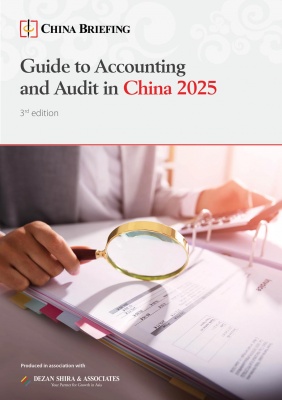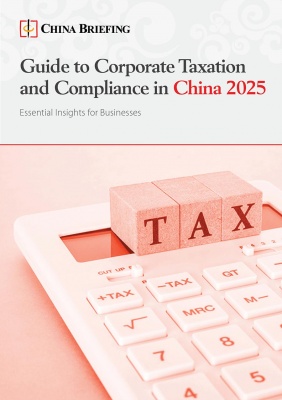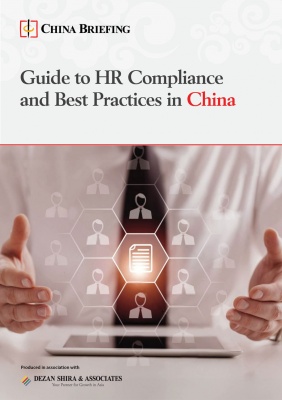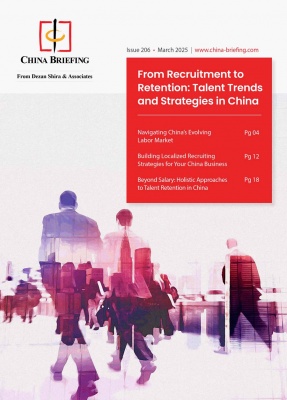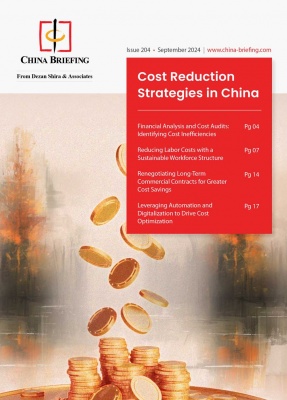The Impact of Tariffs on Vietnamese Exports: US-Vietnam Trade Relations Under Trump 2.0
The US has announced a reciprocal tariff rate of 46 percent on all Vietnamese products, a move that is expected to significantly impact Vietnam’s trade-dependent economy. This announcement follows the imposition of tariffs on global steel, aluminum, and automotive imports to the US, which—while having a lesser direct impact on Vietnam—still pose notable challenges for certain industries. In this article, we provide an overview of Trump’s tariff measures targeting Vietnam and examine their potential implications for the Vietnamese market.
Since returning to office on January 20, 2025, US President Donald Trump has launched a sweeping series of tariff measures, marking a return to the aggressive trade policies of his first term. On April 2, he delivered the hardest blow yet, imposing a 46 percent tariff on all Vietnamese imports.
According to the Trump administration, Vietnam currently “charges” the US at a rate of 90 percent - a figure that appears to be based on the country’s current trade surplus with the US. As such, the US will levy a “discounted” rate of 46 percent on Vietnamese imports. The new tariff rate is set to go into effect on April 9.
As a major supplier of goods to the US, Trump’s tariffs could significantly impact Vietnamese exporters. However, Vietnam may be able to mitigate the impact by striking a deal with the US, especially if it agrees to increase imports of American goods or ease market access for US businesses.
Background: Trump’s tariffs
Trump imposes worldwide 25 percent steel and aluminum tariffs
On February 10, Trump signed proclamations reinstating the 25 percent tariff on all steel imports (the “steel proclamation”) and increasing the tariff on aluminum imports from 10 to 25 percent (the “aluminum proclamation”). These tariffs will apply to imports from all countries and regions “without exception” and will take effect on March 12, 2025.
Trump first imposed tariffs on steel and aluminum imports in 2018 following the Section 232 Investigation, which concluded that steel and aluminum products were entering the US “in such quantities and under such circumstances as to threaten to impair the national security” of the country.
According to the steel proclamation, the 25 percent tariff introduced in 2018 successfully reduced US dependence on imports and increased the consumption of domestic steel. However, it argues that exemptions and alternative agreements negotiated under the Trump and Biden administrations have caused imported steel to account for a share of US consumption similar to pre-2018 levels.
The aluminum proclamation similarly claims that “efforts by foreign producers to circumvent the [aluminum] tariff have undermined [its] purpose.” It further states that, combined with country-specific exemptions, these efforts have driven domestic aluminum smelter capacity utilization rates below the target level intended by the tariff. The proclamation concludes that the 10 percent aluminum tariff is insufficient to address the “threatened impairment to our national security posed by aluminum imports.”
While several countries received exemptions from the 2018 steel and aluminum tariffs, Vietnam was never granted one. As a result, Vietnamese steel and aluminum exports were already subject to a 25 percent and 10 percent tariff, respectively. From March 12, the aluminum tariff will increase to 25 percent, while the steel tariff will remain unchanged.
Trump imposes 25 percent tariff on automobile imports
On March 26, Trump signed a proclamation imposing a 25 percent tariff on imported automobiles and certain auto parts, citing a "critical threat to US national security." The tariffs officially took effect on April 3.
Revitalizing the once-thriving US automobile industry has been a key pillar of Trump’s economic agenda, closely tied to his promise to bring back manufacturing jobs. The proclamation highlights that in 1985, US factories produced 97 percent of the vehicles sold domestically. By contrast, in 2024, 50 percent of the 16 million vehicles purchased by Americans were imported, with only 25 percent of their content manufactured in the US.
Trump imposes reciprocal tariffs on all trade partners, raising tariffs on Vietnam to 46 percent
On April 2, 2025, President Donald Trump announced sweeping tariffs on global trade partners, citing a “national emergency” caused by unfair foreign trade practices. The new measures include a universal 10 percent “minimum base tariff” on all imported goods - fulfilling one of his key campaign promises - along with higher reciprocal tariffs targeting the US’s largest trading partners.
The reciprocal tariffs, which will come into effect on April 9, will not be imposed on certain goods, namely:
- Articles subject to 50 USC 1702(b), such as personal transfers of goods without value, donations, information or informational materials, and personal items transported during personal travel;
- Steel and aluminum articles and autos/auto parts already subject to Section 232 tariffs (meaning the rate on these products will remain at 25 percent);
- Copper, pharmaceuticals, semiconductors, and lumber articles;
- All articles that may become subject to future Section 232 tariffs;
- Bullion; and
- Energy and certain other minerals that are not available in the US.
The 46 percent tariff rate on Vietnam is among the highest placed on any country, and in Southeast Asia alone, it is only lower than that imposed on Laos and Cambodia, which are subject to rates of 48 and 49 percent, respectively.
The tariff plan was first announced on February 13, 2025, when Trump signed a memorandum directing key ministers to implement a plan to impose reciprocal tariffs on all trade partners.
The “Fair and Reciprocal Plan” called for examining non-reciprocal trade relationships with all trade partners, including tariffs on US products, unfair, discriminatory, or extraterritorial taxes on US businesses, workers, and consumers (including VAT), nontariff barriers or measures, including subsidies and regulatory requirements, and policies and practices that cause exchange rates to deviate from their market value.
How Vietnam becomes a target of Trump’s reciprocal tariff plan
Vietnam was vulnerable to this plan from the outset. According to Reuters, Vietnam’s trade-weighted average Most-Favored Nation (MFN) tariff is 5.1 percent, compared to the US’s 2.2 percent. This provided grounds for the US to significantly increase the effective tariff rates on Vietnamese goods.
However, the non-tariff barriers mentioned in the reciprocal tariff plan may also have implicated Vietnam. Firstly, the plan takes aim at “policies and practices that cause exchange rates to deviate from their market value, to the detriment of Americans”. In a report released on January 15, 2021, the result of an investigation launched under Trump, the US Trade Representative (USTR) concluded that Vietnam was undervaluing its currency to achieve an economic advantage and that these actions contributed to a trade imbalance with the US and other countries. As a result, the US listed Vietnam as a “currency manipulator”.
In addition to the investigation into Vietnam’s purported currency manipulation, the USTR launched a Section 301 investigation related to Vietnam’s import and use of timber, claiming that Vietnam may be using illegally harvested or traded timber as inputs for its manufacturing of products that are exported to the US.
However, although the report found that Vietnam’s behavior was “actionable” under Section 301, the USTR also stated on January 19, 2021, Trump’s last day in office, that it would not take any actions in relation to the findings. This dispute was later resolved when Biden came into office, and in April 2021, the USTR said there was “insufficient evidence” to classify Vietnam as a currency manipulator.
Despite these factors appearing to make Vietnam a target of Trump’s reciprocal tariff plan, the considerations for imposing such a high rate appear to be much simpler. The 90 percent rate that the US claims Vietnam charges the US - the basis for the 46 percent rate - was reached simply by dividing the US’s trade deficit by its imports from Vietnam, based on 2024 data from the USTR.
This suggests Vietnam may have to come up with ways to reduce its surplus with the US or buy more American products to negotiate a potential deal with Trump.
Background: US-Vietnam trade in 2024
In 2024, the US was Vietnam’s second-largest trading partner after China and the largest destination for Vietnamese exports. Meanwhile, Vietnam ranked eighth among the United States' top trading partners. According to the US Commerce Department’s International Trade Administration (ITA), total bilateral trade between the two countries reached US$149.6 billion, marking a 20.4 percent increase from 2023.
Vietnam also became the US's sixth-largest source of imports last year, up from seventh place in 2023, with total imports reaching US$136.6 billion. Vietnam’s trade surplus with the US increased by US$18.9 billion from 2023, setting a new record of US$123.5 billion.
The US’s top imports from Vietnam were electric machinery, nuclear reactors, furniture and bedding, footwear, and apparel and accessories.
|
US Top Imports from Vietnam, 2024 |
|
|
Item |
Value (US$ billion) |
|
Electric machinery |
41.7 |
|
Nuclear reactors, boilers, and machinery |
28.8 |
|
Furniture and bedding |
13.2 |
|
Footwear and gaiters |
8.8 |
|
Apparel articles and accessories |
8.2 |
|
Source: International Trade Association, US Department of Commerce |
|
The US exported only US$13.1 billion worth of goods to Vietnam in 2024, though this was an increase of 33.1 percent from 2023. The US’s top exports to Vietnam were electric machinery, plastics, food industry residues, oils seeds, nuclear reactors, boilers, and machinery.
|
US Top Exports to Vietnam, 2024 |
|
|
Item |
Value (US$ billion) |
|
Electric machinery |
4.1 |
|
Plastics and articles thereof |
0.8 |
|
Food industry residues and waste |
0.7 |
|
Oil seeds and miscellaneous grains |
0.69 |
|
Nuclear reactors, boilers, and machinery |
0.59 |
|
Source: International Trade Association, US Department of Commerce |
|
Impact of the tariffs on Vietnam
46 percent reciprocal tariff
The newly announced 46 percent reciprocal tariff rate on Vietnamese goods is poised to have a significant impact on Vietnam’s export-driven economy, especially in key sectors that are heavily reliant on the US market. Industries such as textiles, footwear, and furniture—which have steadily expanded over the past two decades—are particularly exposed. These sectors have benefitted from Vietnam’s reputation as a low-cost, high-efficiency manufacturing hub, but a steep increase in tariffs will strain profit margins, reduce order volumes, and potentially lead to job losses.
Vietnamese exporters may attempt to diversify their markets by targeting consumers in Europe, Asia, or the Middle East. However, this transition will likely be challenging. Many of these markets are already highly competitive, and logistical constraints such as shipping capacity, infrastructure, and regulatory differences could hinder quick adaptation. Additionally, few markets offer the same scale of demand as the US, limiting the potential to offset the losses.
Despite the potential disruption, there is speculation that the tariff hike may not be permanent. It is possible that President Trump is using the high reciprocal tariffs as a negotiating tactic, with the intent of pressuring Vietnam into a new trade arrangement. If Vietnam were to reduce its trade surplus with the US or agree to purchase more American goods—particularly in politically sensitive sectors such as agriculture or energy—a deal could be struck that would lead to the rollback or reduction of the tariff.
In the short term, however, Vietnamese exporters and policymakers will face growing uncertainty. The tariff not only complicates trade flows but also calls into question the stability of Vietnam’s access to one of its most important export markets. As companies weigh their options, the broader implications for investment, supply chain decisions, and regional trade strategies are likely to unfold in the months ahead.
Steel and aluminum tariffs
Vietnam was the US’s fifth largest source of steel in 2024, rising from ninth place in 2023. In 2024, US imports of steel mill products for domestic consumption from Vietnam skyrocketed by 143.4 percent from the previous year to reach 1.2 million metric tons, valued at US$1.13 billion, per data from the ITA. Almost 75 percent was composed of flat carbon and alloy steel. Vietnam also exports a smaller amount of aluminum to the US. In 2024, Vietnam’s total exports of aluminum products for domestic consumption to the US dropped by 1.7 percent from 2023 to 35,593 metric tons, valued at US$142.9 million.
It is important to note that Vietnam’s steel and aluminum exports to the US were already subject to tariffs of 25 percent and 10 percent, respectively. In 2018, during Trump’s first term, the US imposed Section 232 tariffs on steel and aluminum imports from all countries, citing national security concerns. While some countries later received exemptions, tariffs on many Vietnamese steel products have remained in place ever since.
As a result, the impact on Vietnam’s steel exports to the US is likely to be limited, especially given that exports have continued to grow rapidly despite the tariff. The tariff hike could even benefit Vietnamese exporters by leveling the playing field with other countries, which will now face the same 25 percent tariff. Notably, major US steel suppliers such as Canada and Mexico, which were previously granted exemptions, will now be subject to the tariff.
By contrast, Vietnamese aluminum exports to the US are more vulnerable. The tariff rate will increase by 15 percentage points, posing a greater challenge—especially since Vietnam exports smaller quantities of aluminum, and shipments had already declined in 2024 compared to the previous year, even before the tariff increase.
However, the global steel and aluminum markets are likely to experience significant shifts due to these tariffs. If the US achieves Trump’s stated goal of expanding its domestic steel and aluminum industries, major US suppliers will seek new markets for their products, intensifying competition for Vietnamese exports.
25 percent auto tariffs
The 25 percent tariff on imported automobiles and certain auto parts is expected to have a minimal impact on Vietnam’s trade with the United States. Vietnam is not a major exporter of vehicles or automotive components to the US market.
According to data from the ITC Trade Map, the US imported approximately US$1.1 billion worth of vehicles and components from Vietnam in 2024. This accounts for only a small percentage of overall US vehicle and vehicle parts imports, which are dominated by countries such as Japan, South Korea, and Germany. Vietnam currently exports few, if any, complete vehicles to the US.
However, while the impact on Vietnam’s overall exports may be limited, the tariff will still affect its automotive exports specifically. The US is a key destination, accounting for around a fifth of Vietnam’s total vehicle and auto parts exports.
The tariff is primarily aimed at large auto-exporting countries, including Japan, South Korea, and Germany, which maintain significant automotive trade surpluses with the US. While Vietnam is likely to feel little direct impact, it could face indirect effects from potential disruptions to global supply chains or shifts in demand across the international automotive market.
Possible further import tariffs and trade deals
Given his focus on targeting economies with a trade surplus with the US, there remains the distinct possibility that Trump will impose tariffs directly targeting Vietnamese imports. As discussed, Vietnam’s trade surplus in 2024 hit a record high. It has also become one of the US’s top sources for imports, meaning it is unlikely to go under Trump’s radar.
Despite a review launched under the Biden administration, the US continues to label Vietnam as a non-market economy (NME). Under US law, NMEs are subject to certain antidumping and countervailing duties. This means the Trump administration could seek to impose tariffs on Vietnamese goods under this legal framework.
It is also possible that Vietnam’s exporters will become caught in the crosshairs of mounting US-China trade tensions. It has been speculated that a sizeable portion of Vietnam’s exports to the US are actually re-exports from China – an estimated 16 percent in 2021 – as Chinese exporters seek to circumvent Section 301 tariffs by exporting goods to China via Vietnam. This is something that Trump has vowed to tackle. An executive order signed on his first day in office, titled the America First Trade Policy, explicitly calls for exploring the imposition of additional tariffs in relation to China, “particularly with respect to industrial supply chains and circumvention through third countries”.
It has also been argued that the steel and aluminum tariffs are ultimately targeted at China, with their broad scope as a means to curb Chinese reexports of steel and aluminum through third countries, including Vietnam.
Trump’s return to the White House also likely does away with any potential regional trade deals. While the US’s accession to the Comprehensive and Progressive Agreement for Trans-Pacific Partnership (CPTPP) was unlikely even under Biden due to bipartisan dislike of the treaty, the previous administration did pursue its own trade deal with Asia Pacific nations – the Indo-Pacific Economic Framework (IPEF). Launched in May 2022, the IPEF sought to develop trade between the fourteen member nations by facilitating the provision of trade licenses, reducing customs red tape, and improving regulatory transparency in the region, among other measures. In particular, the IPEF sought to expand trade in agricultural products, of which the US is a major exporter.
Although the IPEF did not propose to reduce or eliminate tariffs—unlike the CPTPP—Trump is likely to walk away from the negotiations, given his penchant for undoing the previous administration’s actions.
Nonetheless, it is possible that Vietnam could strike a bilateral trade deal with the US. In a meeting between the US Ambassador to Vietnam Marc Knapper and Vietnam’s trade minister Nguyen Hong Dien on February 14, the ambassador reportedly stated that the US’s trade policy does not target Vietnam specifically.
Moreover, Nguyen suggested that Vietnam is willing to increase imports from the US, particularly agricultural products. Knapper also encouraged Vietnam to “expedite legal frameworks to facilitate U.S. investment in new sectors including energy, semiconductor, AI, and aviation.”
On April 3, Vietnam’s Ministry of Industry and Trade (MOIT) urged the US to delay the implementation of the reciprocal tariff in order to give time to find a mutually beneficial solution. A high-level delegation, led by Deputy Prime Minister Ho Duc Phoc, will visit Washington from April 6 to 14 for additional discussions.
Should Vietnam agree to make concessions such as buying more US goods and lowering barriers of entry to US businesses in Vietnam, it is possible the country can convince Trump to reduce or eliminate the higher reciprocal tariff.
(This article was originally published February 25, 2025. It was last updated April 4, 2025.)
This article first appeared on Vietnam Briefing, our sister platform.









